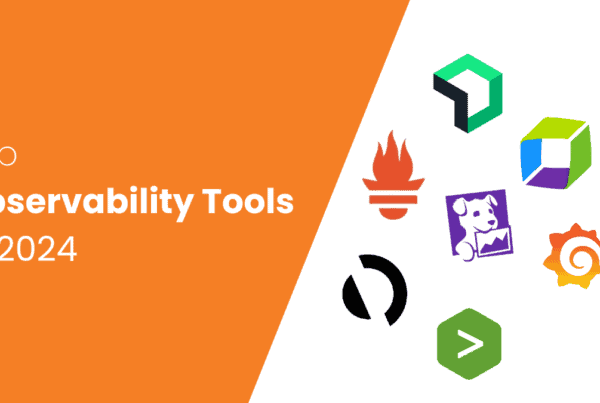
Are you wondering if a remarketing campaign is worth the expense? Remarketing is one of the most cost-effective advertising methods that boosts customer retention and engagement when done correctly.
But if you don’t follow a few remarketing best practices, you could be losing your time and money.
In this article, we’ll look at the best remarketing techniques to increase your conversions and boost your revenue.
What Is Remarketing or Retargeting?
Remarketing or retargeting uses ads to target those who have already shown an interest in your products or services by landing on your website. With remarketing, since you’re presenting highly customized ads to prospects who have previously visited your website, they’re more likely to click on your ads and engage with your products, making the entire campaign cost-effective.
Popular ad networks like Google AdWords, Facebook Ads, and Bing Ads enable you to run remarketing campaigns easily. To set it up, you have to install a remarketing pixel on your website that automatically adds a cookie on your visitors’ browser. Your ad network will then identify the cookie while visitors are on partner sites so that you can display a customized ad you’ve designed just for them.
Remarketing best practices are categorized into three sections:
- Google Analytics Best Practices
- Onsite Optimization
- Optimizing AdWords Configuration
Now let’s get started boosting your remarketing campaigns.
Google Analytics Best Practices
In this part, you’ll find suggestions to increase the engagement of your remarketing campaigns using your Google Analytics account.
1. Monitor Your Campaigns in Analytics to Make Informed Decisions
The best recommendation is to use UTM parameters to better monitor your ad campaigns in Google Analytics. UTM parameters or UTM codes are little bits of text added to the end of your URL for improved tracking in Google Analytics.
By building campaign URLs with UTM codes, you can examine which campaigns are performing best, which ads and keywords for CPC ads are generating the most clicks.
2. Link Your Analytics Data to AdWords
When you set up Google Analytics on your site, your Analytics account will already have plenty of customers’ interaction data. If you want to leverage your Analytics data to properly monitor the interaction of your customers you acquired through remarketing, you must connect your Analytics account to AdWords.
Thus, you can import your relevant Analytics data such as metrics, goals, and eCommerce transactions into your AdWords account.
3. Target High-Value Prospects
If you want to retarget your highly valued customers based on their age, gender, and interests, then remarketing enables you to reach your customers based on several customer demographics to increase your ROAS (return on advertising spend).
To discover your high-value buyers, you need to enable demographics and interests reports into Google Analytics. Once you’ve determined the customer segments that are inclined to spend more on your site, you can retarget only those particular segments to increase your ROAS.
Onsite Optimization
This segment describes how to increase your profits from your remarketing campaign with onsite optimization.
4. Onsite Retargeting
Typically, it takes about four visits to your website for your prospects to make a purchase.
In this regard, you can’t sit passively while your potential customers leave your site before conversion. Through marketing campaigns, you don’t have to wait for them to return.
You waiting for your potential customers to return and drive conversion will only increase your advertising budget. Instead, you can take another chance at converting your visitors into customers with onsite retargeting before they leave your site.
Now don’t confuse onsite retargeting with the regular remarketing ad campaigns. The traditional remarketing is offsite remarketing because you target your prospects after they leave your site.
With onsite retargeting, you target your visitors on your site before they leave by showing a customized exit popup campaign. The exit popup will be triggered by recognizing the user behavior at the exact moment your customers are about to leave. This way, you can convert an extra 2 – 4% of your visitors into leads and customers.
Optimizing AdWords Configuration
This part describes how to optimize configuration in your AdWords accounts to boost your bottom line.
5. Plan a Bidding Strategy
When you retarget visitors, the recommendation to bid high for those who have visited your high-converting landing pages and to bid low for other visitors. This practice is because people who have visited pages such as pricing, products, or other landing pages are more likely to turn into paying customers.
6. Determine the Optimal Frequency Cap
Frequency capping enables you to limit the number of times your ads appear to the same person on the Display Network. Determining the optimal frequency cap for your remarketing campaign ensures that you’re not wasting your advertising budget by targeting prospects who won’t convert. It also prevents your ads to bother your potential customers by targeting them too often.
7. Employ Optimized Images for Dynamic Remarketing Ads
Dynamic remarketing takes remarketing a step further. While remarketing enables you to show ads to people who have previously visited your website, dynamic remarketing shows ads that contain the exact products and services they viewed on your site.
Dynamic remarketing is the perfect retargeting strategy for eCommerce retailers to retarget their prospects on Google Display Network. While planning a dynamic remarketing campaign, ensure that your ads can display product-specific images from your product feed.
To guarantee a high-quality product view, you need to optimize the store’s library images in order for your products to look neat when shown in dynamic remarketing ads.
8. Filter Out Users Who Spend Little Time On Your Website
When building a remarketing list, an essential metric you need to consider is the time spent on your site. If visitors spend more time on your site, it suggests that they are more interested in your content and are more likely to buy your product or service.
To stop spending your remarketing budget on prospects who are not interested in what you have to offer, it is recommended to filter out people who spend very little time on your site.
9. Stop Overwhelming Your Recent Customers
If you ever made a purchase online you experienced, more than once, being overwhelmed with remarketing ads. Remarketing for current customers is a great strategy to improve repeat purchase but this can also irritate your loyal customer base. In turn, it can generate a bad impression on your company.
While you can always remarket your actual customers after a certain period, it is better not to run your remarketing ads just after their purchase.
You can use a burn pixel to stop showing ads to recently converted visitors. This way, you can save your advertising budget by not inviting your recent customers to take the same action twice.
10. Design Highly Engaging Campaigns With Audience Segmentation
Segmenting your audience based on their engagement is a great strategy to show a highly customized ad to your prospects. By audience segmentation, you can approach the concerns of your customers in their buyer journey and improve the click-through rate of your ads.
For instance, when a visitor lands on your homepage, you can target them with creatives that are oriented towards increasing brand awareness. If they’re interested in your pricing or products page, you can convert them with a custom ad.
Simply put, audience segmentation helps you build a highly engaging remarketing campaign by accommodating your customers in their buyer journey.
Bottom Line
Remarketing is an excellent tool to put your ads in front of buyers who you already know are interested in your product or service. Communicating directly with these prospects is a huge advantage, and that’s proven by generally higher CTRs and conversion rates during remarketing campaigns.
We hope this guide of remarketing best practices helped you to determine the right strategy to boost your conversions.
However, remarketing is closely linked to the right optimization practices, which we’ve examined in this article. Apply these suggestions, and you’ll be closer to reconnecting with buyers who are ready to become your customers.
If you want to know more about how to improve your Google AdWords performance, contact us today and we will find the right remarketing strategy for your business to boost your bottom line.



